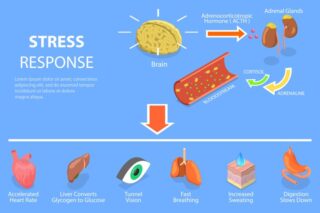Understanding GLP-1: A Key Player in Metabolic Health [Updated 2025]

Introduction
Glucagon-like peptide-1 (GLP-1) is an incretin hormone that has garnered considerable attention due to its significant role in managing metabolic health, particularly concerning diabetes and weight management. Understanding GLP-1 and its therapeutic applications can empower individuals to make well-informed decisions about their health and treatment options.
What is GLP-1?
What is GLP-1? GLP-1 is a hormone naturally produced by the intestines in response to food intake, with essential physiological roles:
- Stimulating Insulin Secretion: GLP-1 enhances insulin secretion from the pancreas, reducing post-meal blood glucose levels.
- Inhibiting Glucagon Release: It suppresses glucagon, a hormone that elevates blood sugar.
- Slowing Gastric Emptying: GLP-1 delays stomach emptying, promoting feelings of fullness and supporting weight management.
- Reducing Appetite: By acting on the brain, GLP-1 decreases appetite, aiding calorie reduction.
- Medications can be injectables or orals – available only through prescription through your health professional

Therapeutic Uses of GLP-1
Diabetes Management:
- GLP-1 receptor agonists are medications used for treating type 2 diabetes, mimicking natural GLP-1 to control blood sugar effectively.
- Examples include exenatide (Byetta), liraglutide (Victoza), semaglutide (Ozempic), and tirzepatide (Mounjaro).
Weight Loss:
- GLP-1 receptor agonists have shown considerable effectiveness in promoting weight loss. Liraglutide (Saxenda) and semaglutide (Wegovy) are specifically approved for weight management.
- Clinical studies consistently demonstrate significant weight loss outcomes in both diabetic and non-diabetic populations.
Benefits and Side Effects
Benefits:
- Improved blood sugar control
- Reduced risk of cardiovascular events
- Weight loss and improved metabolic health
- Potential neuroprotective effects
Side Effects:
- Commonly reported side effects include nausea, vomiting, diarrhea, and constipation; these typically lessen with continued use.
- Risk of hypoglycemia may increase, especially in conjunction with other glucose-lowering medications.
Conclusion
GLP-1 plays a crucial role in regulating blood sugar levels and appetite, making it a valuable target for treating type 2 diabetes and obesity. Understanding the benefits and potential side effects of GLP-1 receptor agonists can help individuals and healthcare providers make informed decisions about their use.
Summary:
- Glucagon-like peptide-1 (GLP-1) is a hormone that plays a crucial role in managing metabolic health by regulating blood sugar levels, reducing appetite, and promoting satiety.
- GLP-1 receptor agonists are used to treat type 2 diabetes and aid in weight loss, offering significant benefits such as improved blood sugar control, reduced cardiovascular risk, and potential weight loss.
- Common side effects include nausea and vomiting, but these usually diminish over time.
- Understanding the role and benefits of GLP-1 can help individuals make informed health decisions.

This article reviewed by Dr. Jim Liu, MD and Ms. Deb Dooley, APRN.
There’s nothing more important than our good health – that’s our principal capital asset.
#medical #telehealth #umedoc










